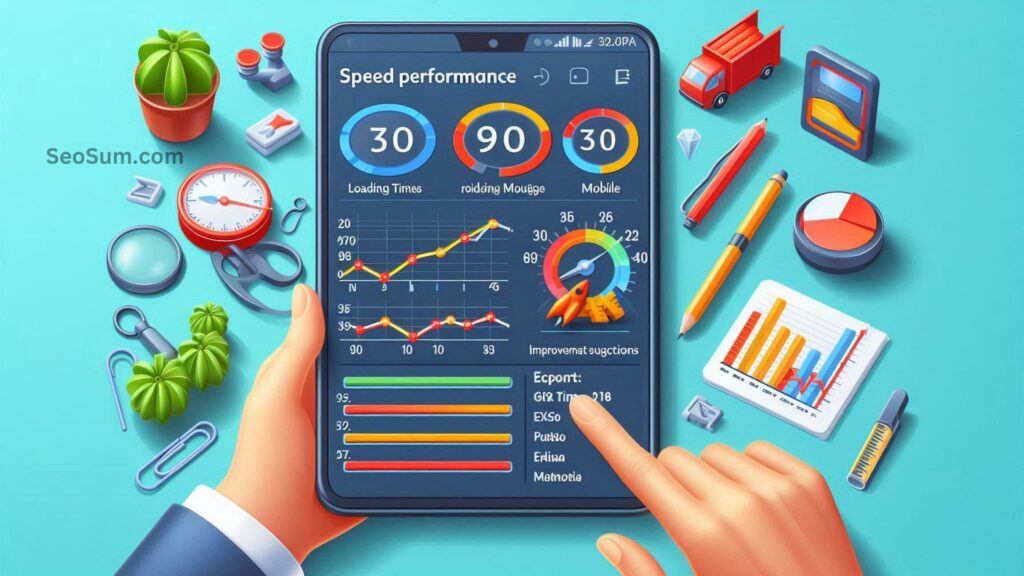If you’re serious about SEO, Google Analytics is a must-have. It gives you valuable insights into how people find and interact with your site. With the right approach, you can use this data to improve your rankings, attract more visitors, and increase conversions.
In this guide, we’ll break down how to use Google Analytics for SEO, step by step.
Getting Started with Google Analytics

Setting Up Google Analytics
If you haven’t set up Google Analytics yet, don’t worry—it’s easy! Just follow these steps:
- Sign in with your Google account.
- Click “Start measuring.”
- Enter your website details.
- Set up a property and data stream.
- Copy the tracking ID and paste it into your website’s header section.
Connecting Google Analytics to Your Website
If you’re using WordPress, install the Site Kit by Google plugin—it’s the easiest way to connect. Otherwise, you’ll need to manually add the tracking code to your website’s HTML.
Understanding the Google Analytics Dashboard
Once data starts rolling in, you’ll see different metrics on your dashboard, including:

- Users: Number of visitors to your site.
- Sessions: Total visits (including repeat visits).
- Bounce Rate: Percentage of visitors who leave without interacting.
- Session Duration: Average time spent on your site.
Getting familiar with these numbers will help you make smarter SEO decisions.
Also Read: How to Leverage Keyword Research Tools?
Tracking Website Traffic
Organic vs. Direct Traffic
Want to know where your visitors are coming from? Go to Acquisition > All Traffic > Channels to see:
- Organic Search: Visitors from Google and other search engines.
- Direct: People who type your website URL directly into their browser.
- Referral: Visitors coming from other websites.
- Social: Traffic from social media platforms.
Tracking these sources will help you understand how well your SEO efforts are working.
Analyzing User Behavior

Bounce Rate & Session Duration
If people leave your site quickly, your bounce rate is high. If they don’t stick around for long, your session duration is low. This usually means your content needs improvement.
Pages Per Session
This shows how many pages a visitor checks out before leaving. More pages per session = higher engagement!
Monitoring Organic Search Performance
Head over to Acquisition > Search Console > Queries to see:
- Which keywords are bringing in traffic.
- Click-through rates (CTR).
- Where your pages rank in search results.
Use this data to tweak your content and improve rankings.
Also Read: Can Automation Tools Save SEO Time?
Identifying Your Best Pages
Go to Behavior > Site Content > All Pages to find your top-performing content. Once you identify these pages, optimize them by:

- Adding fresh content.
- Improving internal links.
- Enhancing on-page SEO.
Tracking Conversions & Goals
Setting Up Goals
Go to Admin > Goals > New Goal to set up conversion tracking. This helps you measure the real impact of your SEO efforts.
Understanding Your Audience
Check Audience > Demographics to see details like:
- Age
- Gender
- Location
Use this info to create content that better resonates with your audience.
Behavior Flow Analysis
Want to see how users move through your site? Go to Behavior > Behavior Flow to spot problem areas and improve the user experience.
Also Read: What do SEO Audit Tools Offer?
Checking Site Speed
A slow website can hurt your rankings. Go to Behavior > Site Speed to find slow-loading pages and fix them by:

- Compressing images.
- Enabling caching.
- Minimizing JavaScript.
Tracking Mobile vs. Desktop Performance
With Google’s mobile-first indexing, your site’s mobile experience is more important than ever. Go to Audience > Mobile > Overview to see how your site performs on mobile vs. desktop and make improvements if needed.
Using Google Analytics for Content Optimization
Find underperforming pages in Behavior > Site Content > Landing Pages and improve them by:
- Updating outdated content.
- Adding relevant keywords.
- Making the text easier to read.
Integrating Google Analytics with Other SEO Tools
For even deeper insights, connect Google Analytics with:
- Google Search Console (for keyword analysis).
- SEMrush or Ahrefs (for tracking backlinks).
By combining these tools, you’ll get a full picture of your website’s performance and unlock more SEO opportunities.





